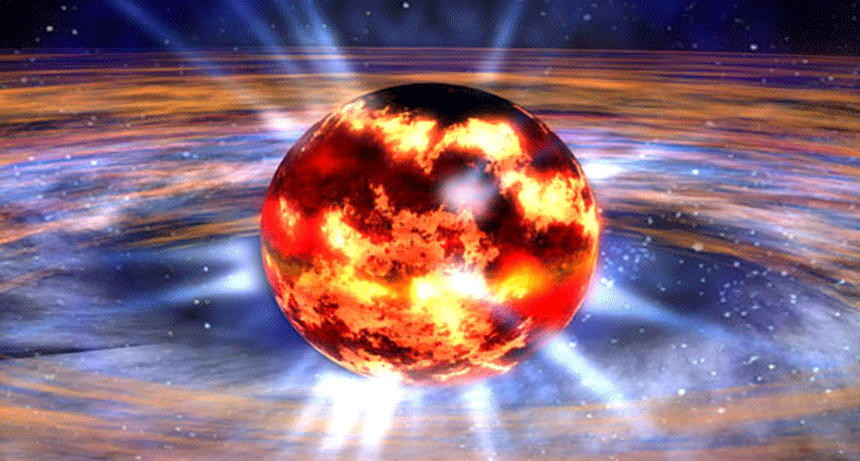black hole A region of space having a gravitational field so intense that no matter or radiation (including light) can escape.
core Something — usually round-shaped — in the center of an object. (in geology) Earth’s innermost layer. Or, a long, tube-like sample drilled down into ice, soil or rock. Cores allow scientists to examine layers of sediment, dissolved chemicals, rock and fossils to see how the environment at one location changed through hundreds to thousands of years or more.
electron A negatively charged particle, usually found orbiting the outer regions of an atom; also, the carrier of electricity within solids.
force Some outside influence that can change the motion of a body, hold bodies close to one another, or produce motion or stress in a stationary body.
gravity The force that attracts anything with mass, or bulk, toward any other thing with mass. The more mass that something has, the greater its gravity.
mass A number that shows how much an object resists speeding up and slowing down — basically a measure of how much matter that object is made from.
neutron A subatomic particle carrying no electric charge that is one of the basic pieces of matter. Neutrons belong to the family of particles known as hadrons.
neutron star The very dense corpse of what had once been a star with a mass four to eight times that of our sun. As the star died in a supernova explosion, its outer layers shot out into space. Its core then collapsed under its intense gravity, causing protons and electrons in its atoms to fuse into neutrons (hence the star’s name). Astronomers believe neutron stars form when large stars undergo a supernova but aren’t massive enough to form a black hole. A single teaspoonful of a neutron star, on Earth, would weigh a billion tons.
particle A minute amount of something.
proton A subatomic particle that is one of the basic building blocks of the atoms that make up matter. Protons belong to the family of particles known as hadrons.
star The basic building block from which galaxies are made. Stars develop when gravity compacts clouds of gas. When they become dense enough to sustain nuclear-fusion reactions, stars will emit light and sometimes other forms of electromagnetic radiation. The sun is our closest star.
sun The star at the center of Earth’s solar system. It’s an average size star about 26,000 light-years from the center of the Milky Way galaxy. Also a term for any sunlike star.
supernova (plural: supernovae or supernovas) A massive star that suddenly increases greatly in brightness because of a catastrophic explosion that ejects most of its mass.
wave A disturbance or variation that travels through space and matter in a regular, oscillating fashion.

